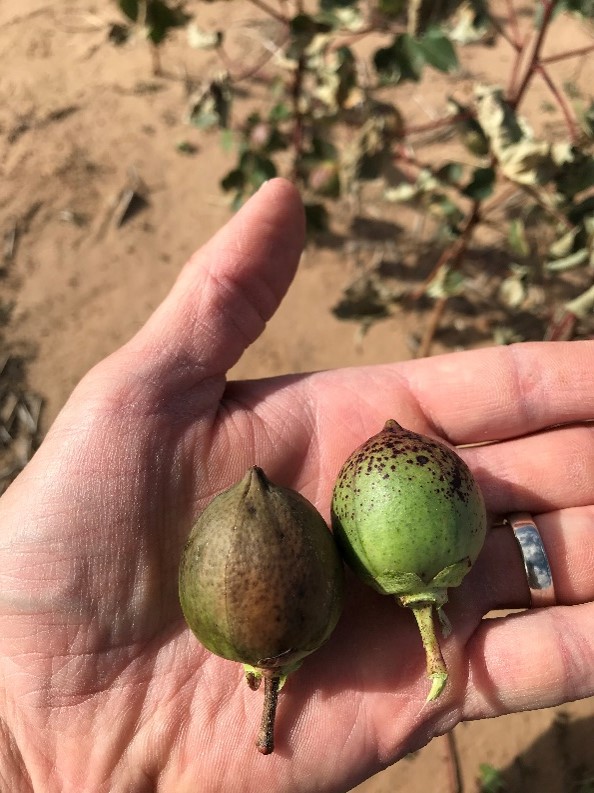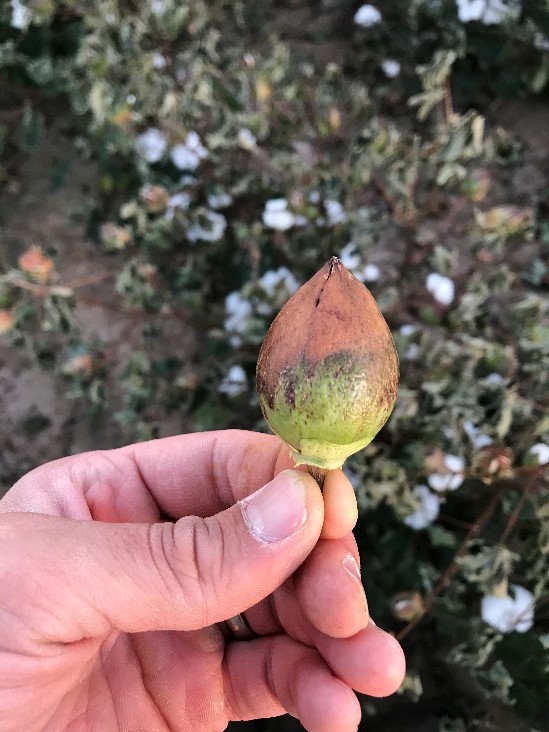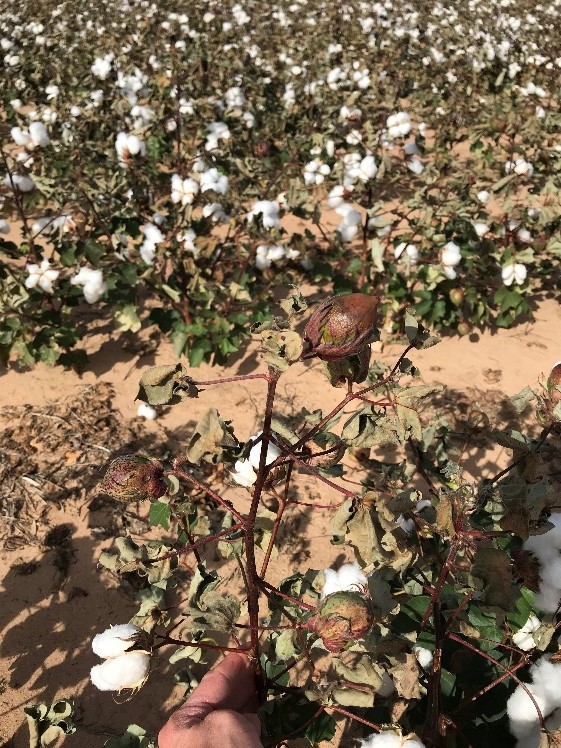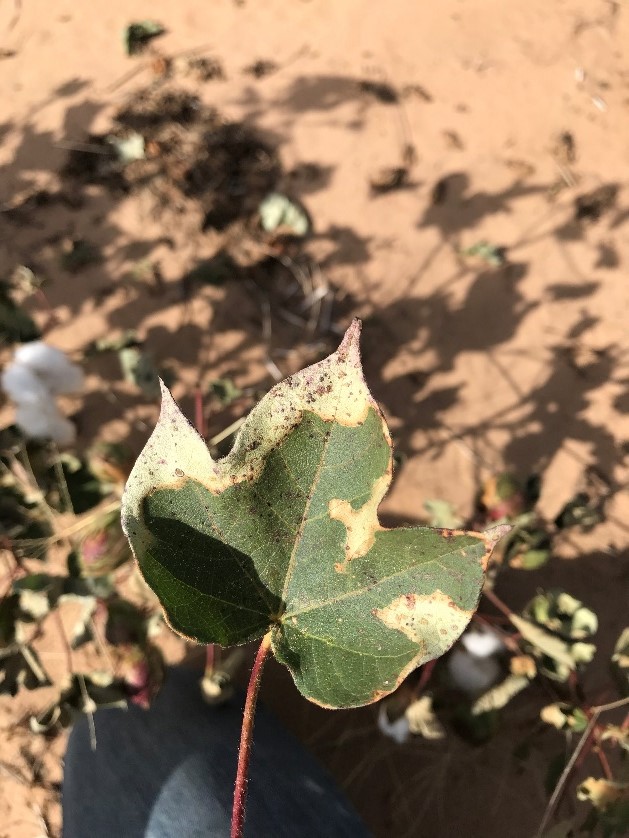Calls concerning our forecast have been steady. In order to get some insight into how to handle closed bolls some have remaining in the upper canopy prior to a freeze, I reached out to Dr. Seth Byrd in Oklahoma. Dr. Byrd has served in both Texas and Oklahoma and has years of experience tackling this issue when an impending freeze event is in the forecast. His comments are below. Special thanks to Dr. Byrd for this contribution!
Dr. Seth Byrd:
When a cotton crop is facing in impending freeze event, there are a few things to account for as you are considering possible options prior to or after the freeze event. These events typically only impact cotton that is either immature (i.e. low percentage of open bolls) or a crop that has a high percentage of open bolls but has not yet been defoliated. The points below are just considerations based on experience with freeze or frost events on both an immature crop or one that is mature but not defoliated.
Not all “freezes” are the same:
- In terms of crop response, there can be a huge difference between a whole night spent in the mid-20’s vs. a few hours in the high 20’s to low 30’s with a breeze. If it is a true killing freeze, the first scenario mentioned above, then it’s likely that any bolls that were not starting to crack prior to this event will not open at all and the vegetation on the plant will exhibit obvious signs of damage (brown – black tissue and an obvious smell, similar to that lettuce that sits in your fridge for too long).
- In the other scenario, which we commonly see when temperatures drop a few degrees below 32 for a few hours first thing in the morning, we may not experience a true terminal freeze. This is particularly true if the cool temperatures are accompanied by a breeze. Depending on the severity, obvious signs of tissue damage will occur but not to the extent of a terminal freeze. Often the leaves have brown or whitish discoloration on the margins and the bolls turn brown on the side facing up.
- The typical weather stations that we get our air temperature measurements from are typically taking readings from several feet in the air, above the crop canopy. The temperature lower in the canopy is typically warmer, so the short cold spells only result in damage to the upper side of bolls on higher nodes on the plant. While the difference may only be a few degrees, when it comes to a freeze a few degrees can make a huge difference. Wind will also help, and we often see frost damage mitigated by a constant breeze.
What are my options prior to a freeze?
- Ideally, we have 5 – 7 days of warning prior to a freeze, and the conditions prior to the event are warm and sunny. This would allow for a harvest aid application to have the time and conditions it needs to have some effectiveness. We’ve observed tremendous defoliation and boll opening activity in even 4 days prior to a freeze, but those 4 days were warm and sunny with clear skies.
- If conditions aren’t favorable for harvest aid activity (cool, cloudy and/or rainy) or there’s very short notice of the freeze even (3 days or less) it may be best to hold off on attempting a harvest aid application. There’s little hope for a return on the investment and the best plan may be to re-evaluate the crop after the freeze has occurred.
- If a terminal freeze is forecasted but it turns out to only be a mild frost, there is still an opportunity to make defoliant or boll opener applications that will have some level of effectiveness, particularly if there is a return to favorable conditions.
What are my option after a freeze event?
- If it’s a terminal freeze event the best option is likely to wait and see what the crop will do naturally over the course of a week. Perhaps the leaves were desiccated enough to drop with a strong wind. Bolls that had started opening prior to the freeze may continue to open, though likely not to the extent required to be properly harvested with a picker.
- In the case of a frost, it is still advisable to wait a few days to get a good idea on the crop condition and what needs to be done. In my experience, even though there is tissue damage on the bolls and leaves, these will still respond to harvest aid products but we need to allow a much longer window of time for efficacy. If we’re used to seeing bolls open in 7 – 10 days on healthy plants, that process may take up to 3 or even 4 weeks on partially frost damaged bolls, depending on weather conditions for the remainder of the season. Similar story for defoliation of partially frost damaged leaves.
 Bolls with partial frost damage. Boll on the left is show with upper side facing up, while boll on the right is shown with bottom side up.
Bolls with partial frost damage. Boll on the left is show with upper side facing up, while boll on the right is shown with bottom side up.
 Boll that was positioned vertically on plant with frost damaged upper portion while lower portion was undamaged due to protection from bracts.
Boll that was positioned vertically on plant with frost damaged upper portion while lower portion was undamaged due to protection from bracts.
 Bolls and leaves on higher nodes of the plant exhibiting more severe frost damage symptoms than bolls and leaves located on lower nodes.
Bolls and leaves on higher nodes of the plant exhibiting more severe frost damage symptoms than bolls and leaves located on lower nodes.
 Leaf exhibiting frost damage symptoms on margins.
Leaf exhibiting frost damage symptoms on margins.

